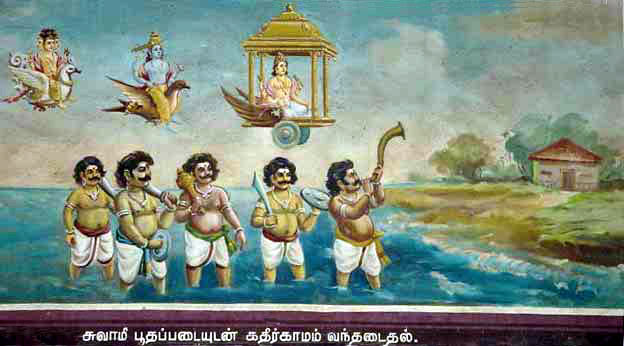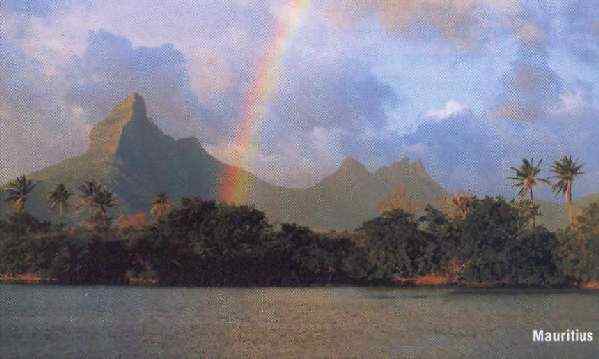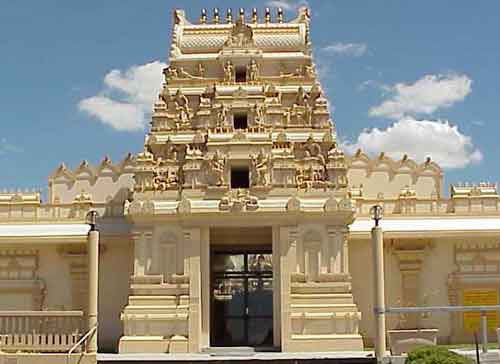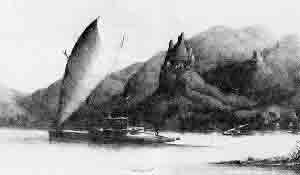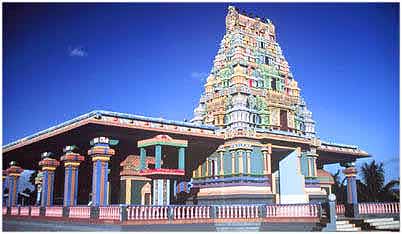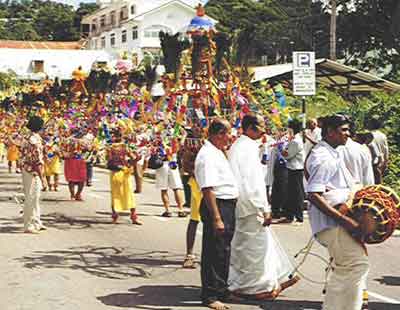
|
|||||||||||||||
|
| |||||||||||||||
Murugan Devotion among Tamil Diasporaபுலம் பெயர்ந்த தமிழ் மக்களின் முருக பக்திby Patrick HarriganDownload this article as a PDF fileMurukan devotion in the Indian Ocean
Lanka may have been the first outpost of Murugan devotion in the Indian Ocean, but it was hardly the last. By the eleventh century C.E., devotion to Skanda-Murugan had reached Java in the Indonesian archipelago, leaving evidence in the form of sculptural artifacts.[2] Indeed, respect for the deity Skanda-Murugan eventually extended even to Buddhist societies far to the north and east, including Tibet[3], China[4] and Japan.[5] Yet, with the exception of Lanka where Tamil community took root long ago and has remained ever since, it was only with the rise of international trade in the 18th and 19th centuries that Tamils in search of a better economic opportunities ventured to cross the Indian Ocean and settle in far-off lands such as Africa, Mauritius, Seychelles and Reunion Island to the west, or Burma, Malaya, Singapore, Australia and even Fiji to the east. Most were simple rural folk, often landless, who signed on as indentured labourers on the great rubber, coconut and sugar estates that were the mainstay of early colonial economies in the region. Others of the Chettiar community set out in search of opportunities in the field of trade and commerce. Still others were recruited from India and Sri Lanka for their expertise as administrators.
Everywhere Tamils were respected and sought out for their well-deserved reputation as industrious, enterprising folk. But they also were – and remain – very conscious of their ancient cultural and religious heritage. So it comes as no surprise that Tamils of every economic stratum were not content merely to eke out a living and climb the economic ladder, but wanted to observe the same festivals, customs and practices that their ancestors had long taken for granted. However, from the very beginning there have been obstacles to overcome. Those who first crossed the Indian Ocean were relatively few in number, and usually did so out of economic need. Few, if any, of them were religious specialists, and most traditional Hindu priests were, until recently, unwilling or extremely reluctant to leave India and cross the waters, which at that time entailed the loss of one's caste standing in the eyes of many Hindus. In most instances, Tamil diaspora communities could scarcely afford to import religious specialists or, when they could, only non-agamic pujaris could be persuaded to resettle abroad. Added to this, the colonial administration, while recognizing Christian holidays and encouraging church attendance, with few exceptions refused to recognize Hindu festivals, for the large estates could not afford to suspend operations regularly due to mass absenteeism among the rank and file Tamil labourers.
Despite such obstacles, Tamils -- especially womenfolk -- did preserve household rituals and much more. In every Tamil community, many were devoted to Amman, Civan, Pillaiyar, Narayanan and, of course, Murugan, whose name has always been synonymous with Tamil language, culture and religion. The most devoted among then either appealed to their brethren for help to construct a simple kovil or, more often, would proceed to build a shrine or kovil themselves, however rustic at first. Each Tamil diaspora community has had to wage its own unique struggle over generations to achieve economic prosperity while yet preserving its Tamil identity and ancestral traditions. Hence, each has its own story to tell of how it has overcome obstacles peculiar to its adapted homeland. It is fitting, therefore, that members of the respective communities have provided detailed accounts of their struggle over generations to establish themselves as distinct and prosperous communities that continue to cultivate Murugan bhakti and reap the Lord's arul despite their relative isolation from the Tamil homeland. Philologists have observed that isolated diaspora communities often preserve their cultural heritage even more jealously than their brethren of the motherland. For instance, the most archaic Scandinavian customs and literary traditions are preserved not in Scandinavia, but in Iceland by Nordic folk who emigrated there many centuries ago. And it is well known that Jaffna Tamils preserve a dialect of Tamil that is, in many respects, closer to classical Tamil than the Tamil spoken in any district of Tamil Nadu. Likewise, as Heinz Bechert has rightly observed, "Whereas the cult of Ceyon or Murugan was fully integrated into Saivism in South India, the god of Kataragama has retained many archaic features…"[6] Hence it is possible that centuries from now diaspora Tamils may preserve archaic elements of Murugan worship, such as kavati, which could pass out of practice in the heartland of the Murugan cultus where the impulse for mainstream religious innovation tends to be greater. 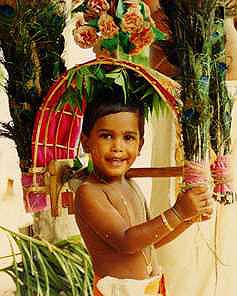
The Second International Murugan Conference, hosted by the island nation of Mauritius, is a fitting tribute not only to the Tamils of Mauritius who have resolutely answered the call of the heart during long decades of separation from Mother India, but to the entire Tamil diaspora throughout the Indian Ocean region and beyond. Quietly and with little fanfare, they have held aloft the flame of devotion not only to their beloved deity Lord Murugan and His traditions, but also kindled within themselves and others a passion for Tamil language, religion and culture in all its myriad aspects and dimensions. Thereby they have not only honored their ancestral traditions and redeemed themselves as authentic Tamil Hindus, but they have also made it possible for the light of ancient wisdom traditions to shine for future generations as well. End Notes[1] Oral tradition preserved at Tiruchendur as told to the author during Kanta Sasti 1996 by M.S. Muttusubramaniya Deekshitar and correlated to Sri Lankan Tamil traditions of Katirkamam. [2] Hayati Soebadio (ed.) Art of Indonesia: Pusaka from the collections of the National Museum, (Periplus editions, 1992) page 75. [3] Iconographic traditions current among Tibetan Buddhists and shamanic Bön-po alike identify the lance-bearing (Skt. shakti-dhara) divine generalissimo both with Karttikeya and with the legend of Shambhala. [4] B.N. Mukherjee, "An Illustration of Iconographic Contact between Karttikeya and ManjuŚrī in China" in Buddhist Iconography, pp. 138-141. [6] Heinz Bechert, "Skandakumara and Kataragama: An Aspect of the Relation of Hinduism and Buddhism in Sri Lanka" in souvenir of the World Hindu Conference, Colombo, April 1982. Download this article as a PDF fileIndex of research articles on Skanda-Murukan
|
